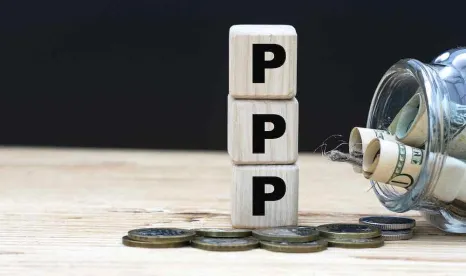The American Rescue Plan Act of 2021 (ARP) that was enacted on March 11, 2021, includes additional modifications to the Paycheck Protection Program (PPP). Unlike previous legislative amendments, the changes to the PPP under the ARP are relatively minor, as summarized below.
Slight Increase in Funding Without an Extension to the PPP’s Duration
As previously discussed here, the PPP is set to end on March 31, 2021, and the ARP does not extend the window for borrowers to apply for first or second draw loans, despite calls from borrowers and lenders requesting an extension of the program due to the current backlog of applications at the Small Business Administration (SBA). Reports indicate that hundreds of thousands of applications have been stalled due to processing errors, technical difficulties and a slow implementation of the rules from the last round of amendments to the PPP, and there are concerns that some of the currently pending applications will not be approved by the March 31 deadline. In response to these concerns, Congress is actively considering an extension to May 31, 2021, with the House passing a bill on March 16, 2021 by an overwhelming margin; however, the bill must still clear the Senate before President Joe Biden signs it into law.
Although the ARP includes an additional $7.25 billion for the PPP, bringing total program funding to $813.7 billion, the latest SBA data report on March 14, 2021, indicated that only about $103 billion remained from prior appropriations.
Given the backlog in applications and the relatively small increase in funding under the ARP, borrowers that are interested in applying for a first or second draw PPP loan should submit applications as soon as possible.
Expanded Eligibility
The ARP expands PPP eligibility to certain internet-only news publishers, additional tax-exempt groups, and larger nonprofit organizations.
Internet-Only News Publishers
Certain internet-only news and periodical publishers that previously were ineligible may now participate in the PPP. Specifically, the new eligibility rules include those business concerns or other organizations assigned NAICS Code 519130 (“Internet Publishing and Broadcasting and Web Search Portals”) that meet all these conditions:
-
Do not employ more than 500 employees, or the size standard established for this NAICS code per physical location
-
Certify in good faith that they are internet-only news or periodical publishers and are engaged in the collection and distribution of local or regional and national news and information
-
Further certify in good faith that proceeds of the loan will be used to support expenses at the component of the business concern or organization that supports local or regional news
Tax-Exempt Groups
The ARP also expands PPP eligibility to certain tax-exempt groups listed under Section 501(c) and exempt from tax under Section 501(a) of the Internal Revenue Code, including labor organizations, social and recreation clubs, fraternal benefit societies, and religious educational groups that were previously barred from applying under SBA rules. Sections 501(c)(4) (social welfare organizations) and 501(c)(19) (certain veterans’ organizations) remain excluded under the new eligibility rules. The newly eligible tax-exempt entities may apply for PPP loans if an entity meets all the following conditions:
-
No more than 15% of the entity’s receipts are from lobbying activities.
-
Lobbying activities comprise no more than 15% of the entity’s total activities.
-
The cost of lobbying activities did not exceed $1 million during the most recent tax year that ended prior to February 15, 2020.
-
The entity employs no more than 300 employees.
Larger Nonprofit Organizations
Under prior PPP eligibility requirements, certain large nonprofits, such as Section 501(c)(3) groups, were ineligible if they employed more than the SBA’s size standard for the relevant industry and were previously also subject to the SBA’s restrictions for affiliated entities. The ARP makes some of these larger nonprofits eligible for PPP funding. Specifically, Section 501(c)(3) organizations and veterans’ organizations that employ no more than 500 employees per physical location will now be eligible for PPP loans. In addition, Sections 501(c)(6) organizations, domestic marketing organizations, and Section 501(c) organizations that are tax exempt under Section 501(a) — except for Sections 503(c)(3), 503(c)(4), 503(c)(6), and 503(c)(19) — are eligible to apply if they employ no more than 300 employees per physical location.
COBRA Premium Subsidy Payments Excluded from Loan Forgiveness
Lastly, because the ARP provides COBRA premium subsidies that are eligible for a 100% reimbursement via a payroll tax credit, COBRA premium subsidy payments will be excluded as eligible payroll expenses for PPP loan forgiveness for those PPP loans received on or after March 11, 2021.
Newly and previously eligible first or second draw loan borrowers that need help applying before the March 31, 2021 deadline should contact counsel for assistance before and during the application process.






 />i
/>i

